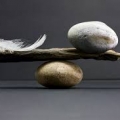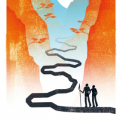Welcome home! Please contact lincoln@icrontic.com if you have any difficulty logging in or using the site. New registrations must be manually approved which may take several days. Can't log in? Try clearing your browser's cookies.
Asubha Meditation
 Bunks
Australia Veteran
Bunks
Australia Veteran
in Meditation
Asubha (foulness / unattractiveness of the body) was taught by the Buddha to help his followers see the true nature of the body in order to decrease and eliminate greed and lust.
I’ve found it to be beneficial in my practice.
For anyone interested in practicing this, you may find visual props helpful. May I suggest searching the following on YouTube:
WARNING: Some of these videos are not for the faint hearted!
- “Human Autopsy” uploaded by Bhikkhu Samahita.
- “Asubha meditation on the foulness and impermanence of the human body and it’s 32 parts” uploaded by LK King.
- “VLOG #17: Seeing Disgust in Food” uploaded by Bhikkhu Samahita.
- “How to practice asubha meditation guided asubha meditation by Ajahn Martin (20/05/17)” uploaded by Forest Dhamma Talks.
- “We need to find a weapon to fight the onslaught of raga-tanha Dhamma talk by Ajahn Martin (10/04/19)” uploaded by Forest Dhamma Talks.
🙏🙏🙏
3




Comments
I'll be completely honest, and with no false modesty or whatever: I only need to see my naked body in the mirror, to know of the advancing deterioration caused by wear & tear, fatigue and ageing. This is not the body I had as a teenager, and what worked yesterday, works less well, today.
It's letting me down, this vessel of mine; through accident and perhaps even unintentional neglect, I have taken for granted its continued function, to my cost.
But at least I'm upright, breathing and still above ground.
Unattractive as it may certainly be, it's mine and I call it friend.
Acceptance of decay is a healthy thing...
After this Amanda requested that the Buddha give the monks an alternative teaching. The Buddha agreed and offered guidance on the mindfulness of breathing.
I think what this sutta suggests is that “perception of the unattractiveness of the body” is a practice, a pragmatic method, not a statement that asserts definitively: the body is unattractive. This is worth bearing in mind in our current social environment of widespread eating disorders and other examples of poor relationships with the body.
It’s a balance, like all things. Asubha was taught as an antidote to greed and lust, as @Bunks has said, but not everybody requires this precise antidote, and like all practices it’s not to be clung to once its usefulness has been exhausted.
I think in particular in response to lust it is interesting. When we see a beautiful human being we see certain proportions, shapes and curves, the glow of healthy skin and muscle, a sufficiency of fat but not an excess. These things do not represent the truth of what we see, instead they arouse an instinctive response which calls up lust.
If we learn to see a little deeper and can come to recognise the body for what it is, a collection of muscles and blood and guts and bones in all it’s slimy and sticky truth, then we can disassociate a little from the perception of beauty.
But I think in the end one should strive for more than just breaking the association with lust. Seeing the body exclusively as slimy and gory and smelly and unpleasant is also to bring associations into what you see, a different association but also not one that totally accurate.
I would like to end up in a place where I can still enjoy the aesthetics of things, be it human bodies or art. But the thing is that it should not cause desire and greed to arise.
One other thing I would mention is that watching CSI is also good for the practice of Asubha. Almost every episode you get shown bodies in various states of decomposition, the results of autopsy’s, burns victims, all kinds of different forms of death. You kind of get used to it, and also the idea that the body has all these various properties.
@Kerome what about the Body Positivity movement? I think it’s very common today to have a lot of desire for others’ bodies, but mostly disgust for one’s own. I’m not saying this is everyone’s experience, but it does seem to be common.
One method for people who dislike their bodies is to dissociate from them: this body is not me. But another method can be to develop a new appreciation for one’s body: this is actually a beautiful body; in its own way it’s kind of miraculous; it’s got me so far in life.
Are these both good methods? Is one more “Buddhist” than the other? Personally, I think they can both be helpful, depending on the individual.
It is certainly advised that if one is practicing asubha meditation that it should be balanced with metta meditation for ourselves and others as anger may arise.
When I met Ajahn Brahm I spoke briefly to him about asubha meditation and he basically said he wasn’t much of a fan of it and found the monks he knew who practiced it ended up disrobing anyway.
Kammaṭṭhāna meditation takes many forms.
Wrathful meditation another visualisation practice can be very intense.
This morning doing yoga, working with the body, I was focussing on areas of tightness. That involves experiencing tension and letting it be or relaxing. I personally find this far more helpful, useful and practical. I tend to send metta, light and gratitude to my body.
The question of control or mastery over hunger, lust, pain, mental states etc comes in my experience from the most simple but sustained practices. Too many people have not practiced but try and find relief without skills of calming, visualisation, focus etc. Quite often when overwhelmed ...
I think it’s just the opposite, that one should have respect for one’s own body in all its varied aspects, including the slimy guts and other contents. It is the smoothly functioning chemical works that keeps us alive.
It’s the desire for other’s bodies that causes the problem. So seeing all these different aspects as also being present in their bodies can move us away from seeing the body as an object of beauty. So this is a certain measure of being more conscious, of being aware of all these gross features as well as the aesthetics.
Pride in one’s own body can also cause problems. A lot of body builder types suffer from this, after putting so much effort into making it function just so they have a lot invested in it.
"A cartoon in an American medical magazine shows four senior medical students standing together. Three are engaged in active conversation. Only the remaining one turns his head to take notice of a pretty nurse. The caption beneath the cartoon reads: "Guess which one has not done twelve pelvic examinations today." It is doubtful that many persons outside of the medical profession will appreciate the meaning, but to medical students and interns it speaks a reality. During his months of training in obstetrics and gynecology the medical trainee must spend many hours engaged in examining and handling the most repulsive aspects of female genitals. As a result he finds the female body becoming less attractive and his sexual urges diminishing. During my own years as a medical student and intern, this observation was repeatedly confirmed by the comments of my co-workers, both married and single. As we have seen, the same principle is utilized in the sections of the Discourse on repulsiveness and the cemetery meditations." Dr Douglas Burns (psychiatrist and Buddhist)
Interesting....I wonder if a surgeon would operate on his / her own partner?
Aversion therapy which Asubha is an early example of, was designed as a quick fix for
the early sangha.
This page has far better tools and some practical links at the bottom
https://healthypsych.com/learning-center-buddhist-psychology-theory-tools/
Ethically, it would be unthinkable, unless of course it was an immediate critical emergency..
I strongly object to the phrase 'repulsive aspects of female genitals' by the way.
For millennia, women have been conditioned to believe that periods were filthy, unwholesome, unclean, and completely unacceptable in a person supposedly the essence of decorum and dignity. Even in some religions today, a menstruating woman is considered 'unclean' and that really riles me.
Talk about victimising and stigmatising our gender for nothing more than a natural occurrence.
As if women don't have enough to contend with in their day-to-day comings and goings, without also having to defend a perfectly normal and some might say, miraculous portion of their bodies.
That said, I'm sure you didn't mean to imply that women's genitalia is a disgusting feature of their anatomy. I just think you could have worded it better...
Well, it was just part of the quoted text. And let’s be honest, genitals in general are a bit dangly, inelegant, awkward and repulsive
They’re not my words @federica. Note the quotation marks and the reference to Dr Douglas Burns after them.
I just thought it was an interesting article worth sharing.
My instinct is very much to prefer “bodies are miraculous” to “bodies are repulsive”.
Thats very understandable. But “bodies are miraculous” also is a little short of a complete description.
I think TNH’s saying is very much in line with those poor monks choosing the assassins knife - the original asubha contemplation is not ideal. The Buddha was not infallible, shock horror
I have probably spoken to five different monks about this and (as expected) received five different responses as to the importance of asubha meditation.
I’d say some people just don’t find its beneficial in their practice while others (like yours truly) do.
Each to their own..... 👍
Good point. It’s very interesting that he gave a teaching, it failed, and then he chose another teaching. Is this upaya in action?
I’ve been reading @Jason ’s blog recently, and he presented it as evidence that the Buddha may not have been omniscient. Perhaps it’s more important to be a sensitive and flexible teacher than it is to be omniscient.
Another example that Ajahn Sumedho gives is:
The Buddha didn’t usually make omniscient statements; he chose to stay within the realm of verifiability and human experience. As such, the asubha teaching isn’t doctrinal; it’s one available method for releasing attachments. But I feel like I’m repeating what’s already been said now.
Interesting thread, @Bunks
The error is mine in the attribution.
I apologise, @Bunks.
However, my objection still stands for the reasons stated.
No worries @federica! Apology accepted 🙏🙏🙏
It’s interesting that the asubha meditation also changes one’s view on loved ones, or at least it did for me, the little bit I practiced it. It’s not just sexual desire that it alters but for example my view on my mother’s aging body became different, and so on.
OMG! check out Dr Pimple Popper (aka Dr Sarah Lee).
Apparently some people like watching this stuff......it's become an excellent Asubha weapon in this arsenal.
If you're easily grossed out then look away now......(apologies, I posted the wrong link initially)
It reminds me @Bunks of one of my client who told me he had a big boil on his bottom, ( he and his partner lived on a tiny boat, hygiene standards weren't the best) he then asked if I had some newspaper to put on the chair before he sat down, just in case it popped..
The gross mental image of it popping was stuck in my mind throughout the interview...
You're welcome...
Thanks @Shoshin and @federica - I needed a laugh today.....getting a little stir crazy
Cemetery contemplation 🙏🏻🙏🏻🙏🏻
https://birken.ca/wp-content/uploads/2019/03/Ajahn-Sona-Cemetary-Contemplations.pdf
Reading the back story and working your way through these photos can be really powerful.
Knowing we will ALL end up like this (unless we get barbecued of course) is quite sobering but can also be very liberating for our practice.
I’ve always found death meditations powerful @bunks, so thanks for that, it is a good find. I had a thorough look through the document, and noted a strong reaction to the decomposition. Sobering is definitely the word here. I’m grateful not to have to suffer the accompanying smell.
But in these photographs we can see reflected the fate of ourselves, our loved ones, our friends, our children. Death is an intrinsic part of life, however unfamiliar we may be with it in this modern age.
I think it is a good thing to return to every so often, because we get used to seeing only living bodies.
I was reading Walpola Sri Rahula’s book What the Buddha Taught and came across this, pure coincidence but it suited my mood...
Nine Cemetery Objects;. This is a great reminder .. and often heard here at cemeteries From dust thou art and to dust thou shall return ... Love it for putting perspective on things.
I also intend to check out the Ajarn Martin video . I used to listen to a lot of his talks . Is he a bit unorthodox in his teaching ? At times he almost sounds like a Christian preacher with his talk of hell- something that westerners do not often hear from teachers maybe ?
I’ve found myself returning to this document several times the last few days, it leaves a quite strong impression when you become slightly familiar with the stages of decomposition. It is no longer revolting but it doesn’t lose any of its power to fascinate, realising that our bodies are impermanent and will all go through this.
Its literally something I can feel in my feet and on my tongue, my body reacts to seeing this, it causes a draining of the body’s pleasure. Very sobering.
No, he’s not unorthodox. He teaches in the same vain as his teacher Ajahn Maha Bua. Many believe he was an Arahant.
The hell realms are taught and spoken about freely in Thailand. Maybe Western monks and teachers are a little wary of putting Westerners off?
I will say that Ajahn Martin is quite tough on the monks under him. He’s not all love and kindness like Ajahn Brahm.
